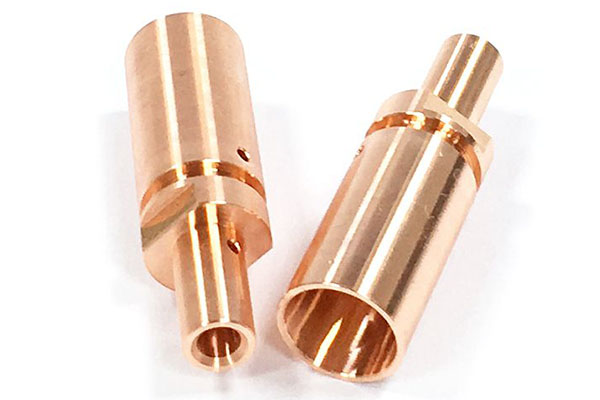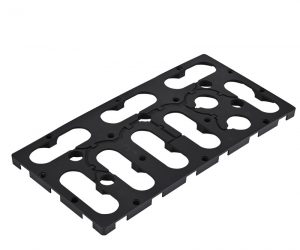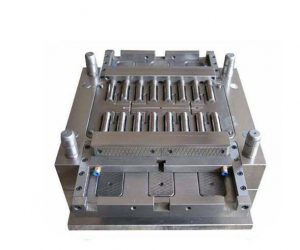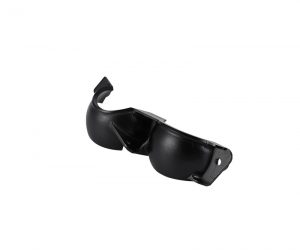1. The Anatomy of Rapid Prototyping Costs
1.1. Direct Cost Components: Material and Process Basics
1.1.1. Material Selection: The First Cost Driver
The choice of material in rapid prototyping is a fundamental determinant of cost. A wide array of materials is available for rapid prototyping, each with its own cost structure and performance characteristics. Thermoplastics like ABS, which are commonly used in Fused Deposition Modeling (FDM), are relatively inexpensive, typically costing \(0.15 - \)0.30 per cubic centimeter. This makes them an attractive option for functional testing, especially when large volumes of material are required. ABS is known for its toughness and relatively high strength, which makes it suitable for creating prototypes that need to withstand mechanical stress during testing. For Yigu Technology example, if you are prototyping a simple mechanical part like a gear or a bracket, ABS could be a cost - effective choice.
On the other hand, PolyJet resins, which are used in 3D printing processes that create highly detailed and smooth - surfaced models, are more expensive, ranging from \(0.80 - \)1.50 per cubic centimeter. These resins are ideal for aesthetic models where surface finish and detail are crucial, such as in the design of consumer products like smartphones or jewelry. The high cost is due to the advanced chemical formulations that allow for precise curing and the creation of fine features.
Nylon, particularly when used in Selective Laser Sintering (SLS), is priced at \(0.60 - \)1.20 per cubic centimeter. It is favored for applications where durability and the ability to create snap - fit parts are important. Nylon's high melting point and good mechanical properties make it suitable for creating functional prototypes that can be used in real - world applications, such as small mechanical components in consumer electronics or automotive parts.
For high - strength prototypes, aluminum processed through Computer Numerical Control (CNC) machining comes at a significantly higher cost, between \(2.00 - \)5.00 per cubic centimeter. Aluminum is used when the prototype needs to replicate the strength and other mechanical properties of the final product, as in the case of aerospace or high - performance automotive components. The cost is not only due to the material itself but also the complex machining processes required to shape the aluminum.
The following Yigu Technology table summarizes the key aspects of different materials:
| Material Type | Cost per Cubic Centimeter | Ideal for | Tolerance Range |
| ABS (FDM) | \(0.15–\)0.30 | Functional testing | ±0.3mm |
| PolyJet Resin | \(0.80–\)1.50 | Aesthetic models | ±0.1mm |
| Nylon (SLS) | \(0.60–\)1.20 | Durable, snap - fit parts | ±0.15mm |
| Aluminum (CNC) | \(2.00–\)5.00 | High - strength prototypes | ±0.05mm |
1.1.2. Process Costs: Machine Time and Complexity
The rapid prototyping process itself also contributes significantly to the overall cost, mainly through machine time and the complexity of the operation.
- Fused Deposition Modeling (FDM): This process has a relatively low upfront cost for simple parts, often in the range of \(50 - \)200. However, its build speed is slow, with a layer height typically ranging from 1 - 5mm. This means that for large - scale prototypes, the machine time required can be substantial, driving up the cost. For instance, if you are creating a large, low - detail model such as a prototype of a large plastic container, the slow build speed might not be a major issue if cost is the primary concern, but it will increase the overall time to complete the prototype.
- Stereolithography (SLA): SLA has higher material costs compared to FDM, but it offers a superior surface finish, with a roughness average (Ra) of 0.8μm, and high precision. The cost for medium - sized detailed parts can range from \(100 - \)500. The higher cost is due to the need for specialized equipment, such as high - power lasers, and the more expensive liquid resins. SLA is often used when a smooth surface finish and high precision are required, like in the creation of dental implants or jewelry prototypes.
- CNC Machining: CNC machining excels in metal prototyping, but it incurs setup fees that can range from \(200 - \)1,000. Additionally, for complex geometries, the machining time can be quite long, leading to higher costs. This is because CNC machines need to follow precise tool paths, and complex shapes require more intricate programming and longer machining times. For example, when creating a prototype of a complex aerospace component with internal channels and tight tolerances, the setup and machining costs will be significantly higher compared to a simpler part.
1.2. Hidden Costs: Beyond the Quotation
1.2.1. Design for Manufacturability (DFM) Adjustments
A design that is not optimized for the chosen rapid prototyping process can lead to significant cost overruns, often adding 20 - 40% to the total cost.
- Wall Thickness: In FDM, if the wall thickness is less than 1mm, support structures are usually required. These support structures not only add to the complexity of the build but also increase the amount of material used by about 30%. For Yigu Technology example, if you are designing a hollow - walled prototype with thin walls, the need for support structures can substantially increase the material cost and the overall cost of the prototype.
- Undercuts: Complex geometries with undercuts in SLA require additional labor for support removal. This can add \(50 - \)100 per part. When the prototype has features that cannot be easily printed without support, such as overhangs or cavities, the post - processing step of removing these supports becomes labor - intensive and costly.
- Tolerance Mismatch: Over - specifying tolerances, for Yigu Technology example, asking for a tolerance of ±0.01mm instead of the more reasonable ±0.1mm, can double the machining costs in processes like CNC machining. Tighter tolerances require more precise machining operations, often involving multiple passes and more accurate measuring equipment, all of which contribute to higher costs.
1.2.2. Post - Processing Expenses
Post - processing steps are often overlooked but can account for 15 - 30% of the total cost of rapid prototyping.
- Sanding/Polishing: For SLA models, sanding and polishing to achieve smooth surfaces can cost \(20 - \)50 per part. This is especially important when the prototype needs to have a high - quality appearance, such as for a product design showcase. The process of sanding and polishing requires skilled labor and time to ensure an even finish.
- Painting/Coating: Applying a color - matched finish or a metallization coating can cost between \(50 - \)200. This is common when the prototype needs to mimic the final product's appearance. For example, if you are creating a prototype of a consumer product that will be painted a specific color or have a metallic finish, the cost of painting or coating can be a significant portion of the total cost.
- Heat Treatment: For CNC - machined metal parts, heat treatment to improve mechanical properties can cost \(100 - \)500. Heat treatment is often necessary to enhance the strength, hardness, or other mechanical properties of the metal prototype, but it adds an extra cost due to the energy and equipment required for the process.
2. Choosing the Right Provider: Beyond the Price Sheet
When it comes to affordable rapid prototyping services, the cheapest option is not always the best. Selecting the right provider requires a comprehensive evaluation that goes beyond the price tag. Here are two key aspects to consider during your due diligence.
2.1. Technical Due Diligence
- Equipment Calibration: A reliable rapid prototyping service provider should have their equipment regularly calibrated to ensure accurate results. Look for providers with ISO 9001:2015 certification, which indicates that they have a quality management system in place to maintain consistent product quality. Additionally, ask for Coordinate Measuring Machine (CMM) inspection reports. For Yigu Technology example, a provider using a Zeiss PRISMO CMM with an accuracy of ±0.0015mm can offer high - precision measurements, ensuring that your prototype meets the required specifications. This level of accuracy is crucial, especially for industries like aerospace or medical device manufacturing, where even the slightest deviation can have significant consequences.
- Material Traceability: Premium providers understand the importance of material traceability. They should be able to provide datasheets for the materials they use. For instance, if you are working on a medical device prototype, the resin used should meet USP Class VI standards, which are strict requirements for materials that come into contact with the human body. For applications where fire resistance is a concern, such as in electronics, the material should meet UL 94 V - 0 standards. Providers like Protolabs are known for their extensive material libraries and the ability to offer detailed material information, giving you peace of mind about the quality and safety of your prototype.
2.2. Scalability and Support
- Design Support: A provider that offers Design for Manufacturability (DFM) feedback upfront can save you a significant amount of money in the long run. By providing recommendations on aspects like wall thickness, they can help you avoid costly design flaws. Studies have shown that early DFM feedback can save 10 - 15% in revision costs. For example, if a provider advises you to increase the wall thickness of your FDM - printed prototype from 0.8mm to 1.2mm to avoid the need for support structures, it can reduce both the material cost and the complexity of the build process.
- Rush Services: Sometimes, project timelines are tight, and you may need your prototype in a hurry. A provider that offers rush services, such as a 24 - hour turnaround option, can be invaluable. While this option may cost 20% more than the standard turnaround time, it can help you avoid project delays. For example, if you have a trade show deadline approaching and need a prototype to showcase your product, the ability to get it quickly can be worth the extra cost. However, it's important to balance the need for speed with the quality of the prototype, so make sure the provider doesn't compromise on quality when offering rush services.
3. Conclusion: Invest in Intelligence, Not Just Affordability
In Yigu Technology conclusion, the journey to understanding the true cost of affordable rapid prototyping services has been a detailed exploration into the multifaceted world of product development. The initial allure of a low - cost quote can be deceiving, as the real value of a rapid prototype lies in its ability to serve its intended purpose effectively.
The direct costs of material and process selection are just the tip of the iceberg. The material you choose, whether it's the budget - friendly ABS for functional testing or the more expensive PolyJet resin for high - detail aesthetic models, sets the foundation for your prototyping expenses. The prototyping process, with its varying speeds, precision levels, and equipment requirements, further contributes to these costs. FDM might be a cost - effective option for large, simple parts, but its slow build speed could be a drawback. SLA offers high precision and a great surface finish but comes at a higher price due to material and equipment costs. CNC machining, while excellent for metal prototyping, incurs significant setup fees and long machining times for complex geometries.
FAQs
1. What is the most cost - effective material for rapid prototyping if I'm on a tight budget?
ABS is often the most cost - effective material for rapid prototyping when on a tight budget. It typically costs \(0.15 - \)0.30 per cubic centimeter and is suitable for functional testing, especially for parts that need to withstand mechanical stress.
2. How can I minimize the hidden costs associated with rapid prototyping?
To minimize hidden costs, ensure your design is optimized for the chosen prototyping process. Work closely with your provider to get early Design for Manufacturability (DFM) feedback. Also, be clear about your post - processing requirements upfront to avoid unexpected expenses.
3. Is it worth paying more for a rapid prototyping service with better technical due diligence?
Yes, it is worth paying more for a service with better technical due diligence. Providers with calibrated equipment and material traceability can offer more accurate and reliable prototypes. This can save you money in the long run by reducing the need for rework and ensuring your prototype meets the required quality standards.





